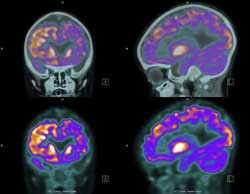A micro look at epilepsy
Our knowledge about the role of neural microcircuits or hub neurons in epileptic activity is very limited. To identify what changes cause epilepsy, the EU-funded project 'Functional connectivity and the role of hub neurons in epilepsy' (HUBS IN EPILEPSY) investigated their functional and anatomical structure in the brain. Researchers aimed to identify the key elements in the neural microcircuitry that causes epilepsy. For this purpose, they employed in vitro and in vivo calcium imaging as well as histological investigation of epileptic tissue. The pilocarpine mouse model of temporal lobe epilepsy was chosen for its similarity to human brain pathology. Results linked epileptiform activity to the co-activation of spatially localised neuronal assemblies. However, recurrent epileptic activity was found to be due to co-activation of different clusters of neurons rather than the same neuronal subsets. Contrary to a previous hypothesis, GABAergic (gamma-aminobutyric acid) interneurons in the hippocampus play a key role in interictal bursts. Interictal bursts are the signals seen in the period between seizures or epileptic episodes in the brain in an electroencephalogram. To elucidate epileptogenesis — the transition of a normal brain into epilepsy — researchers employed immunohistochemistry on tissue samples from epileptic mice. Despite extensive cell death during epileptogenesis, early-born GABAergic or glutamatergic neurons survived. Project activities have shed novel insight into the mechanisms underlying epilepsy at the micro scale. Further research endeavours in this arena can now focus on characterising the role of GABAergic or glutamatergic neurons in epileptiform activity. These findings could also lead to the development of more effective therapies for this debilitating condition.
Keywords
Epilepsy, neuronal network, hub neurons, GABAergic, interictal bursts

